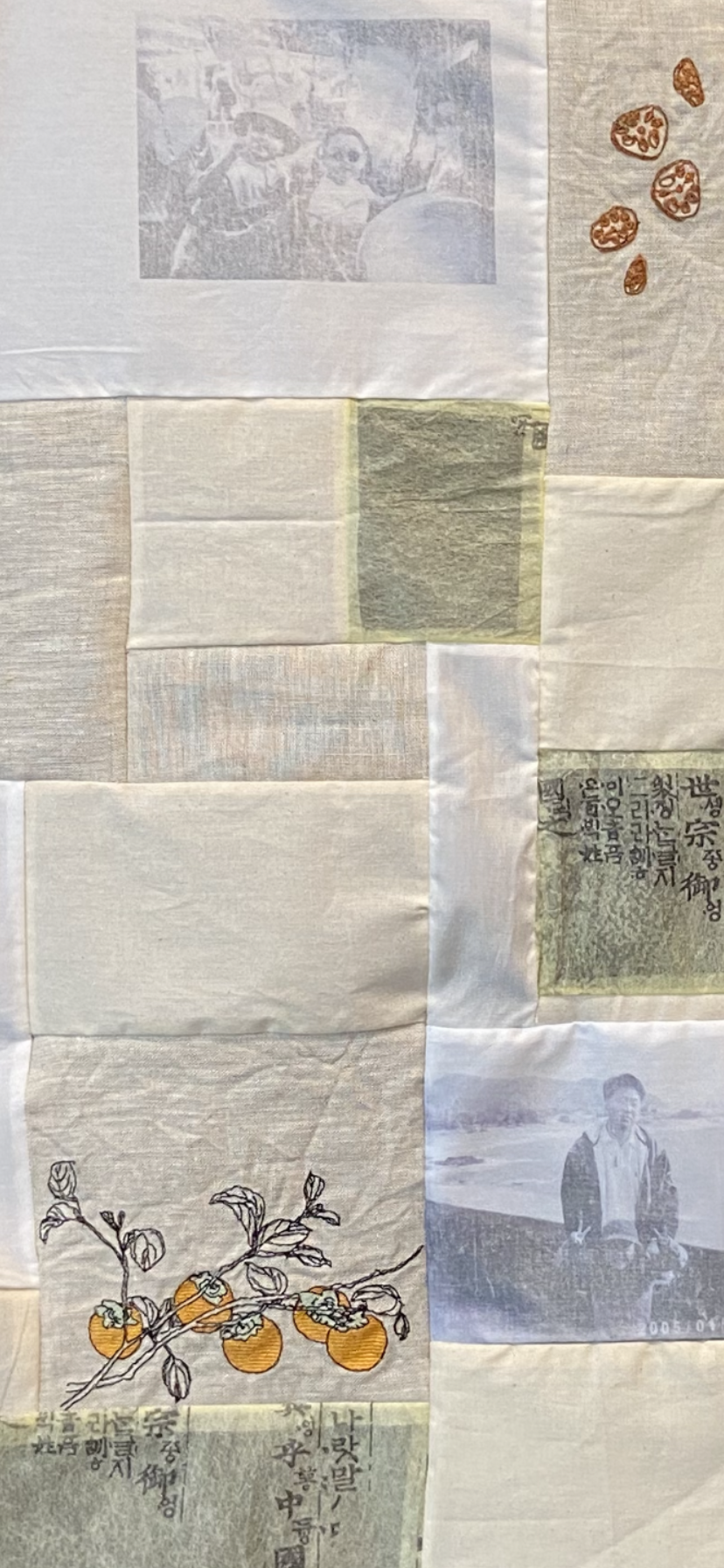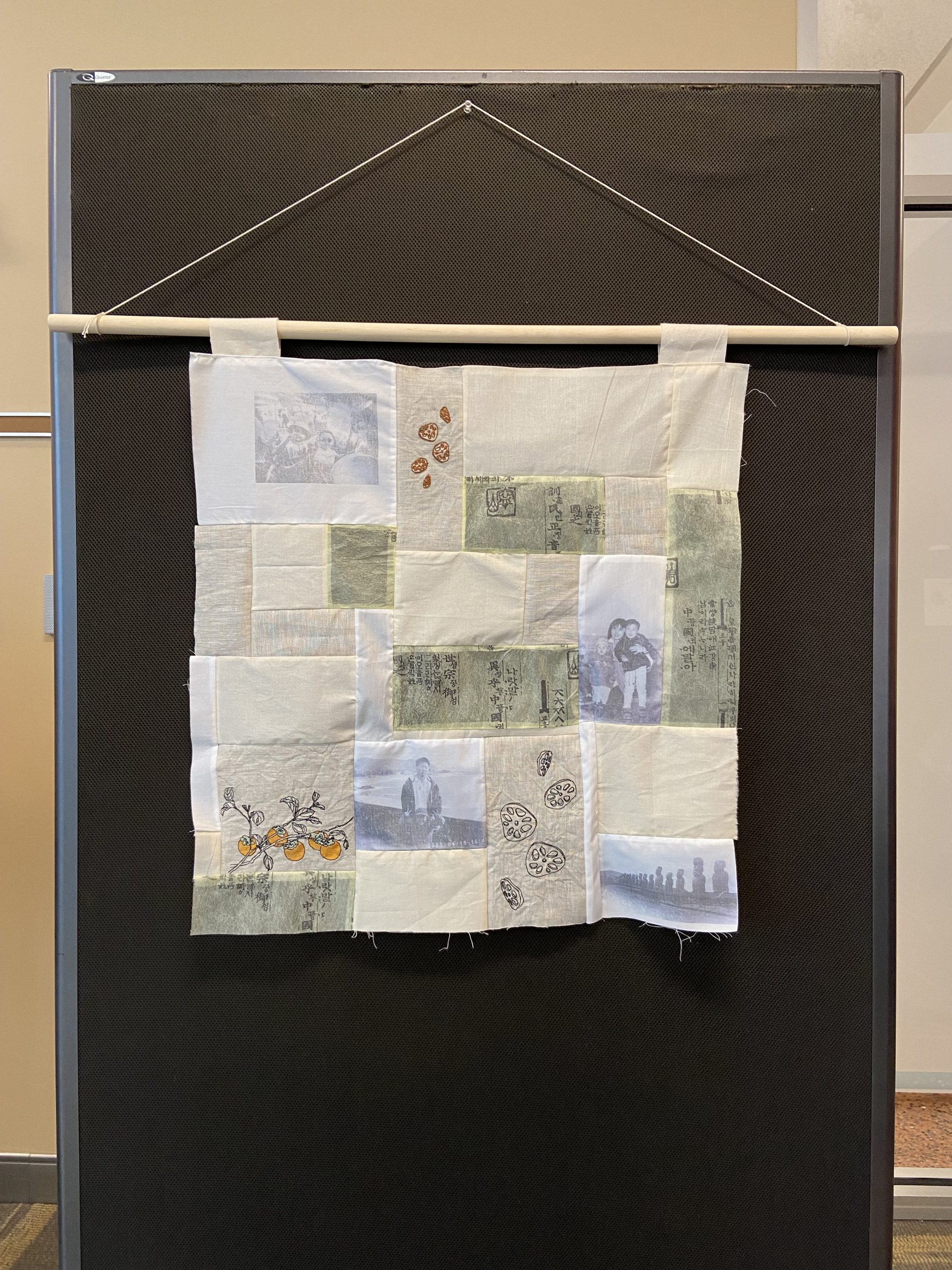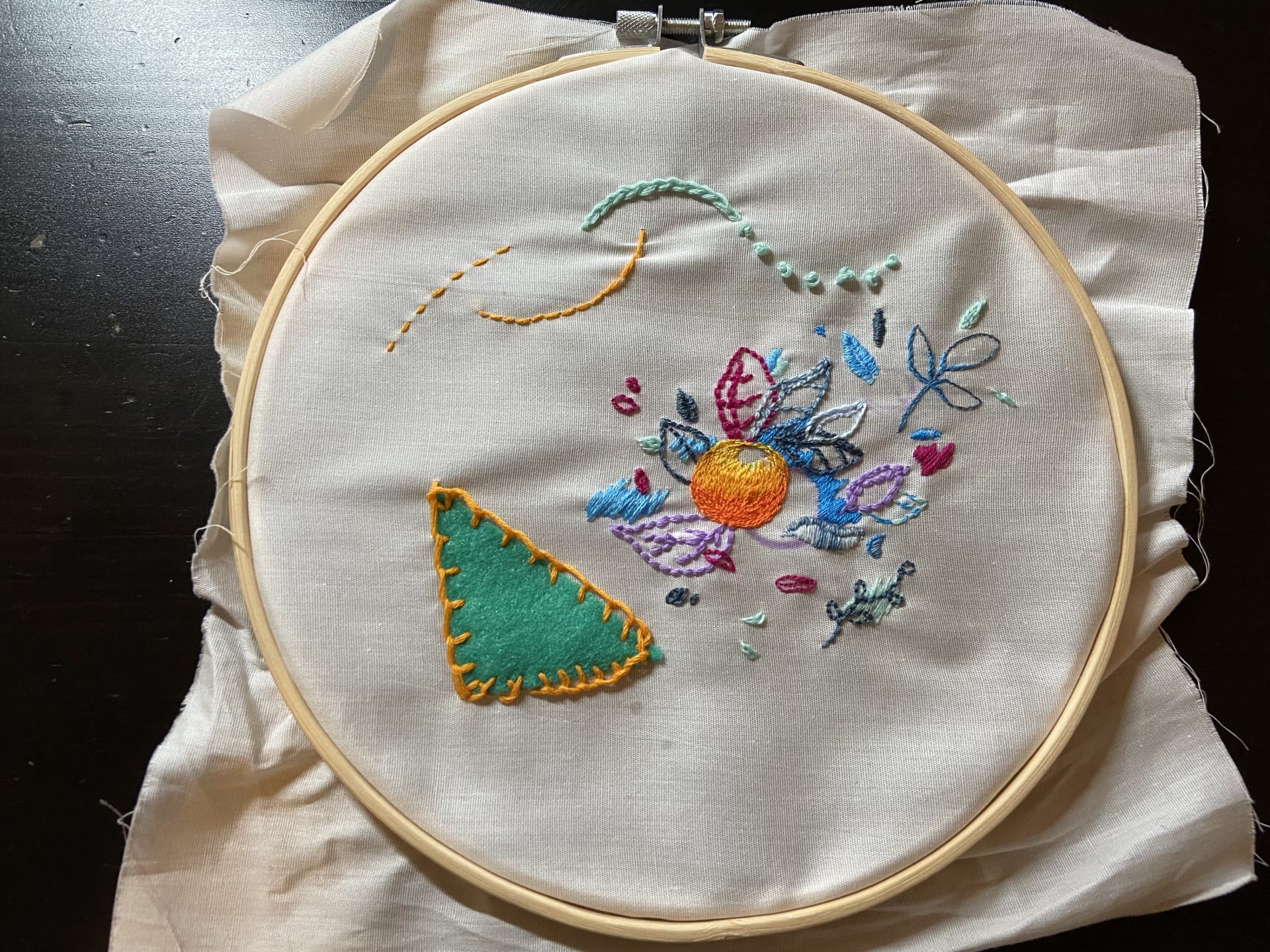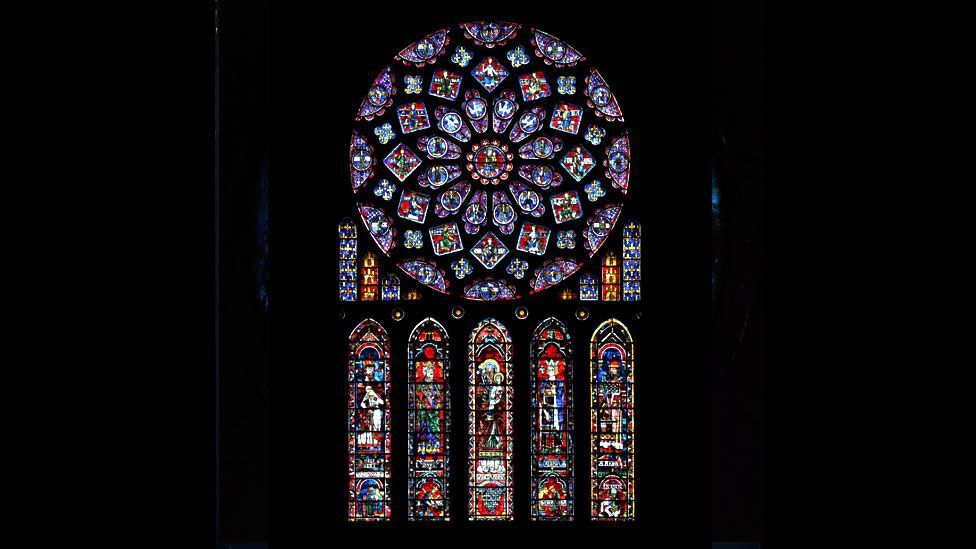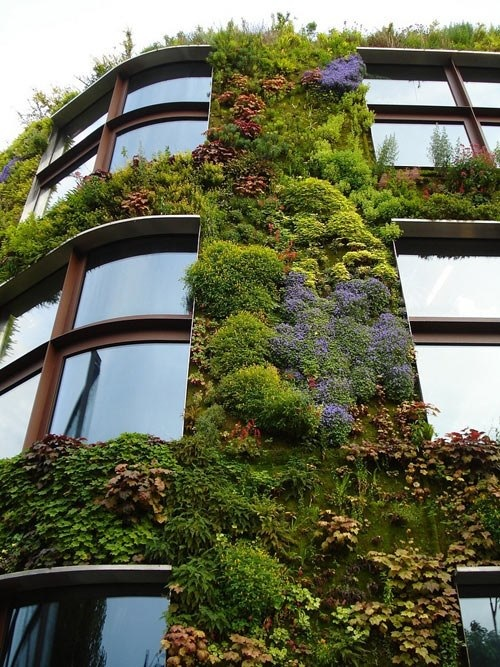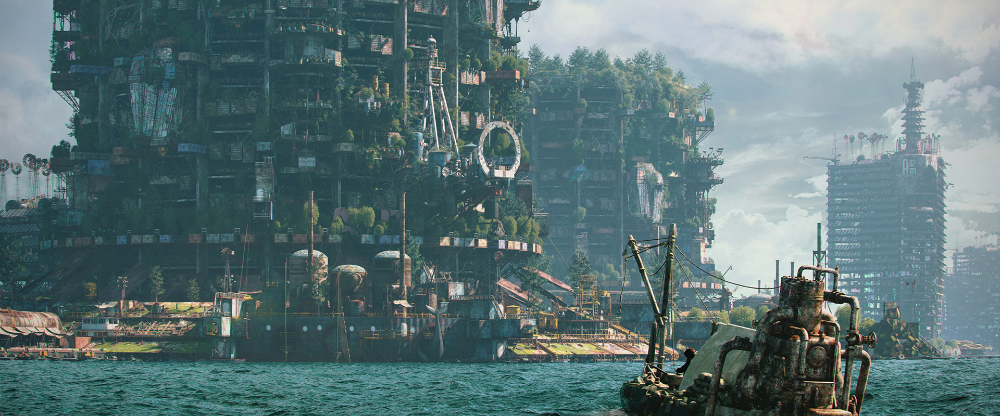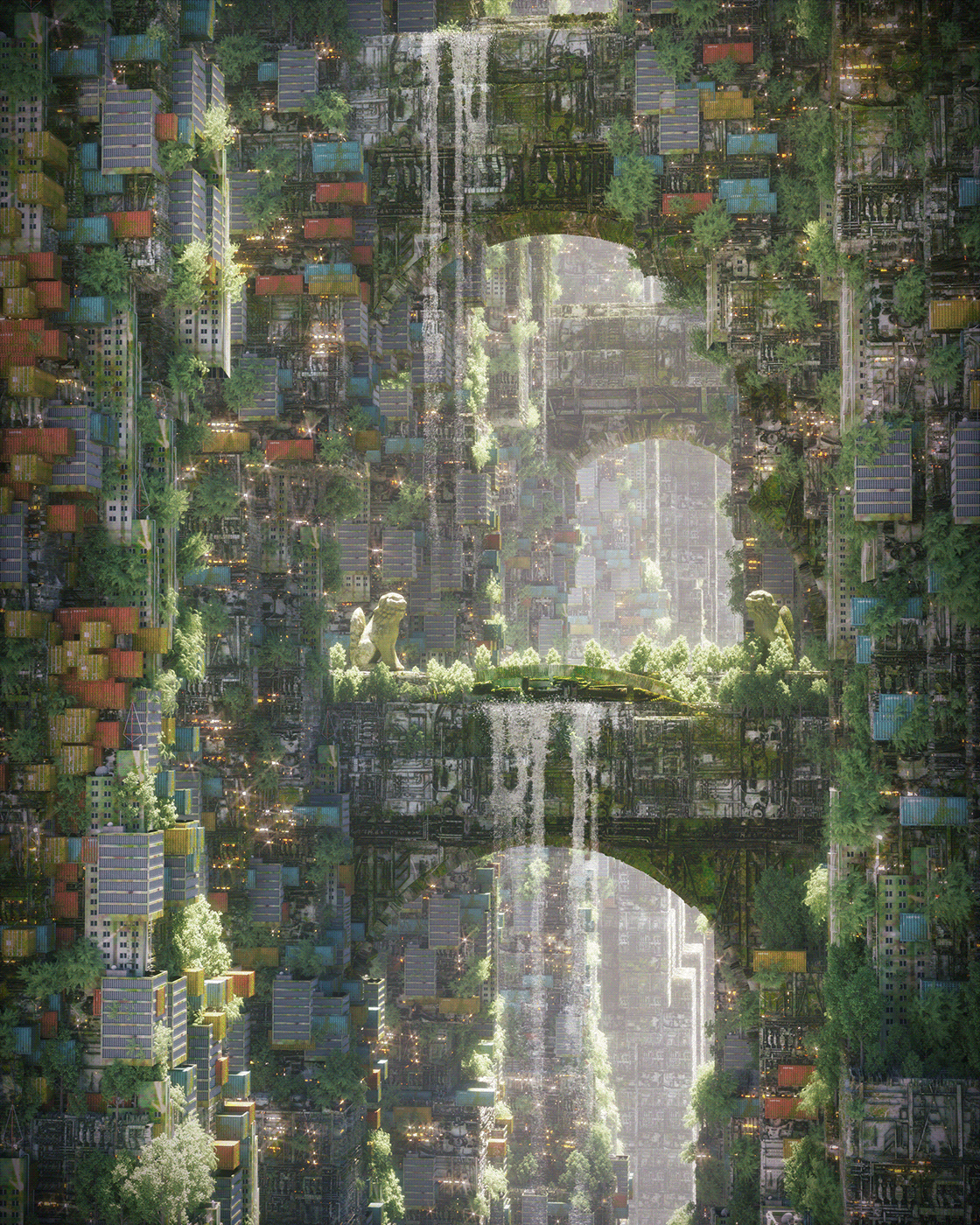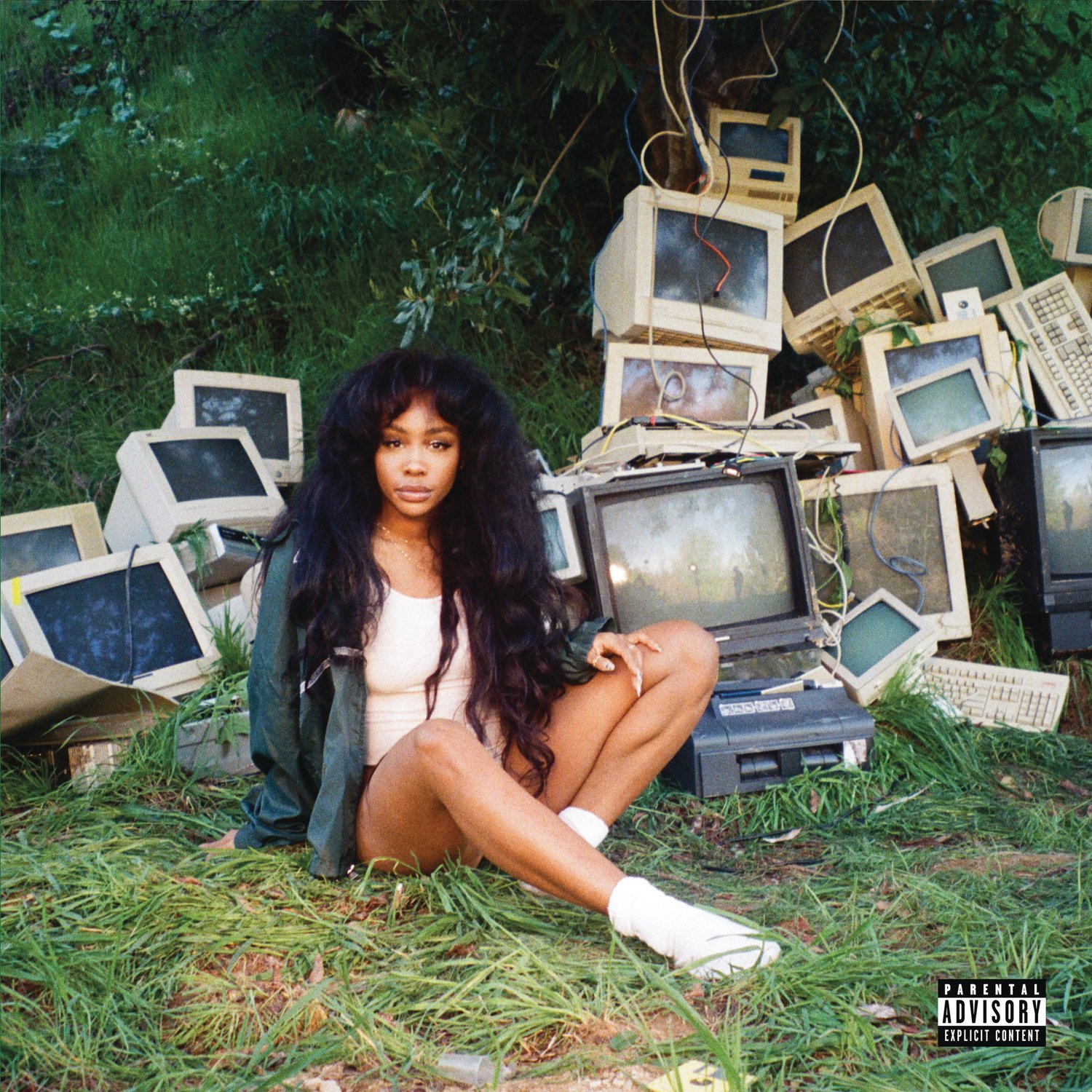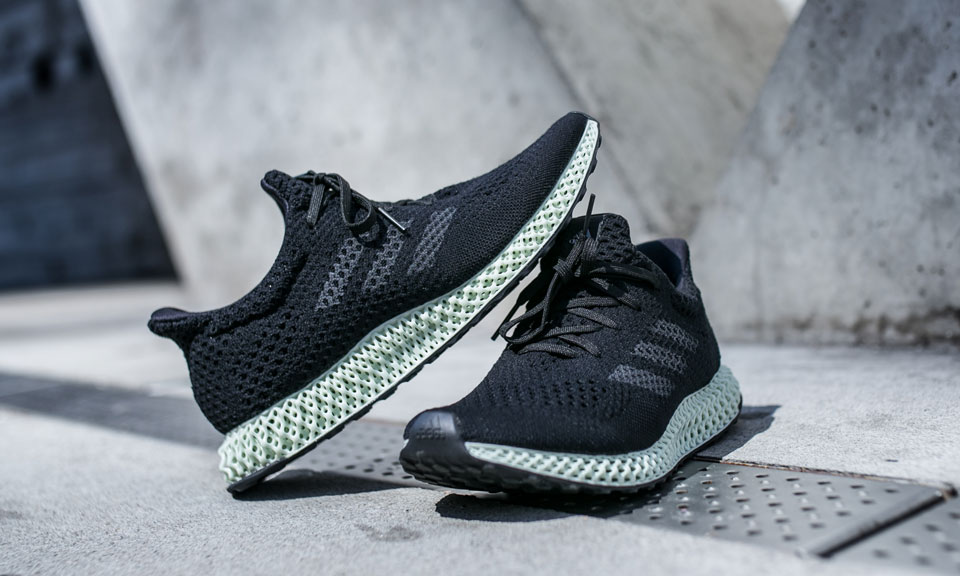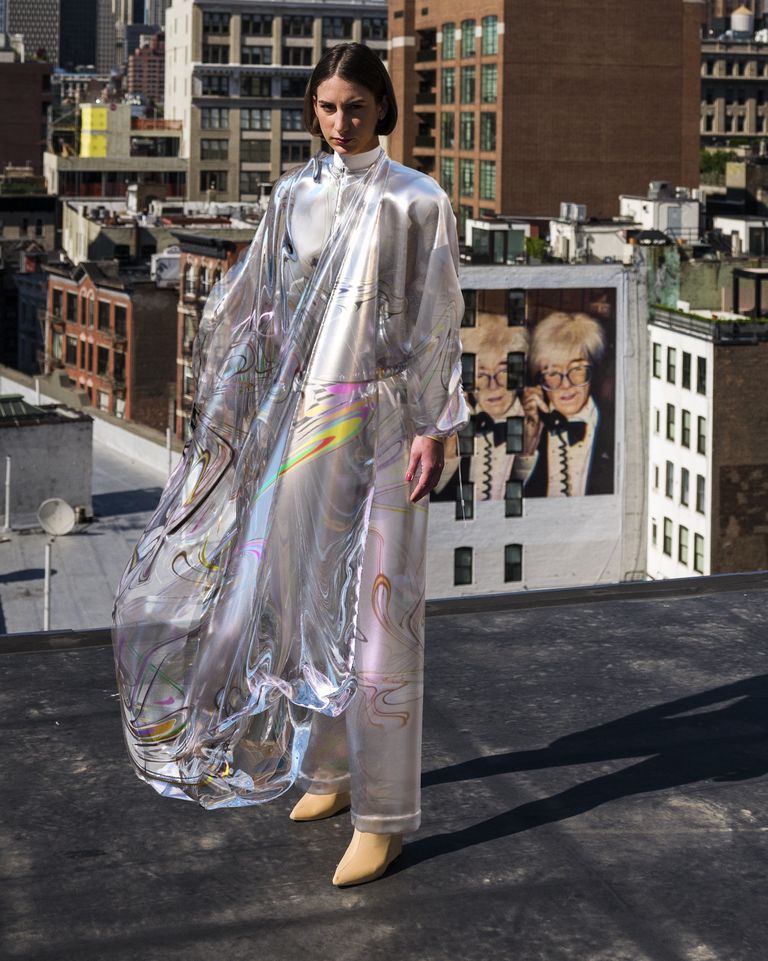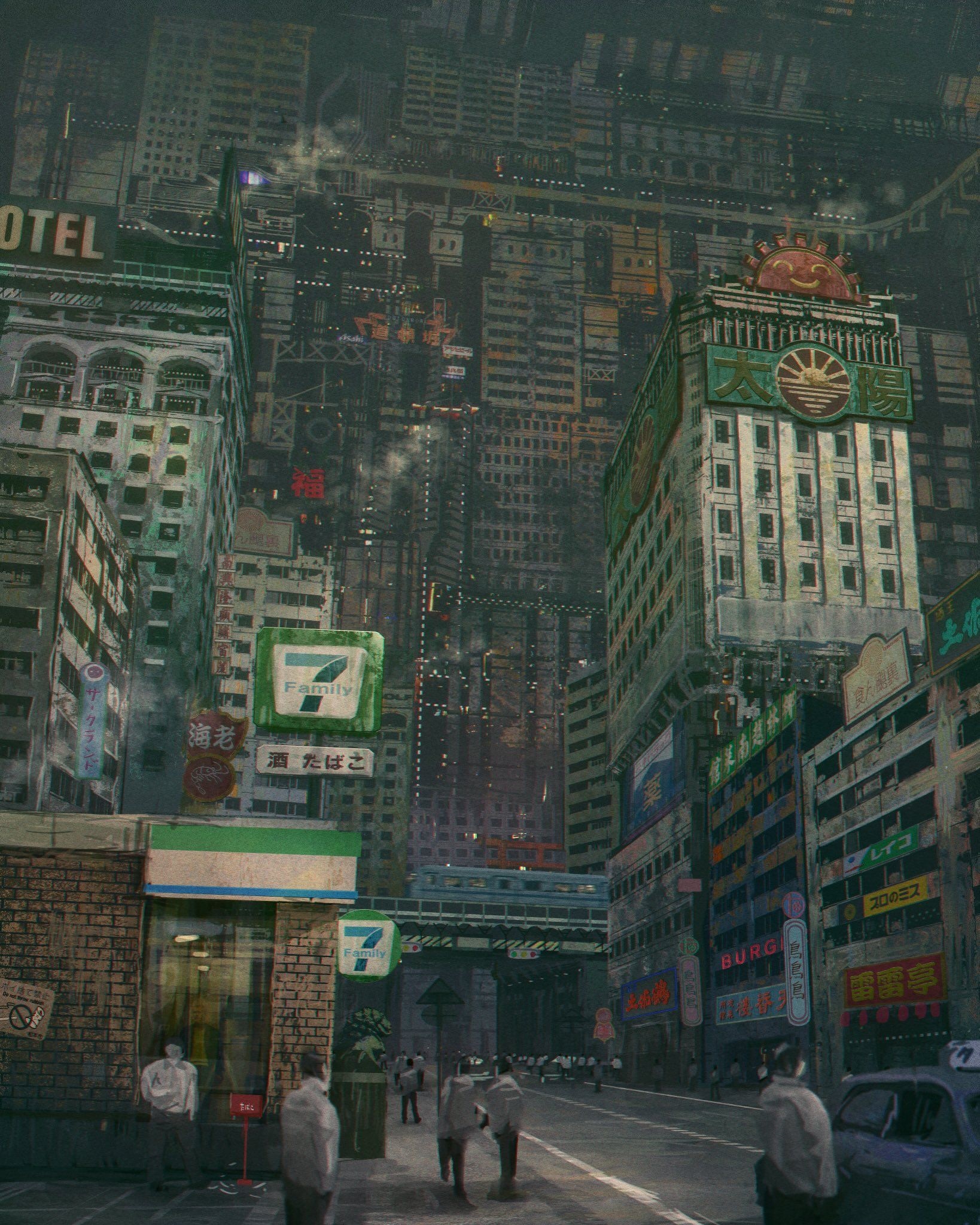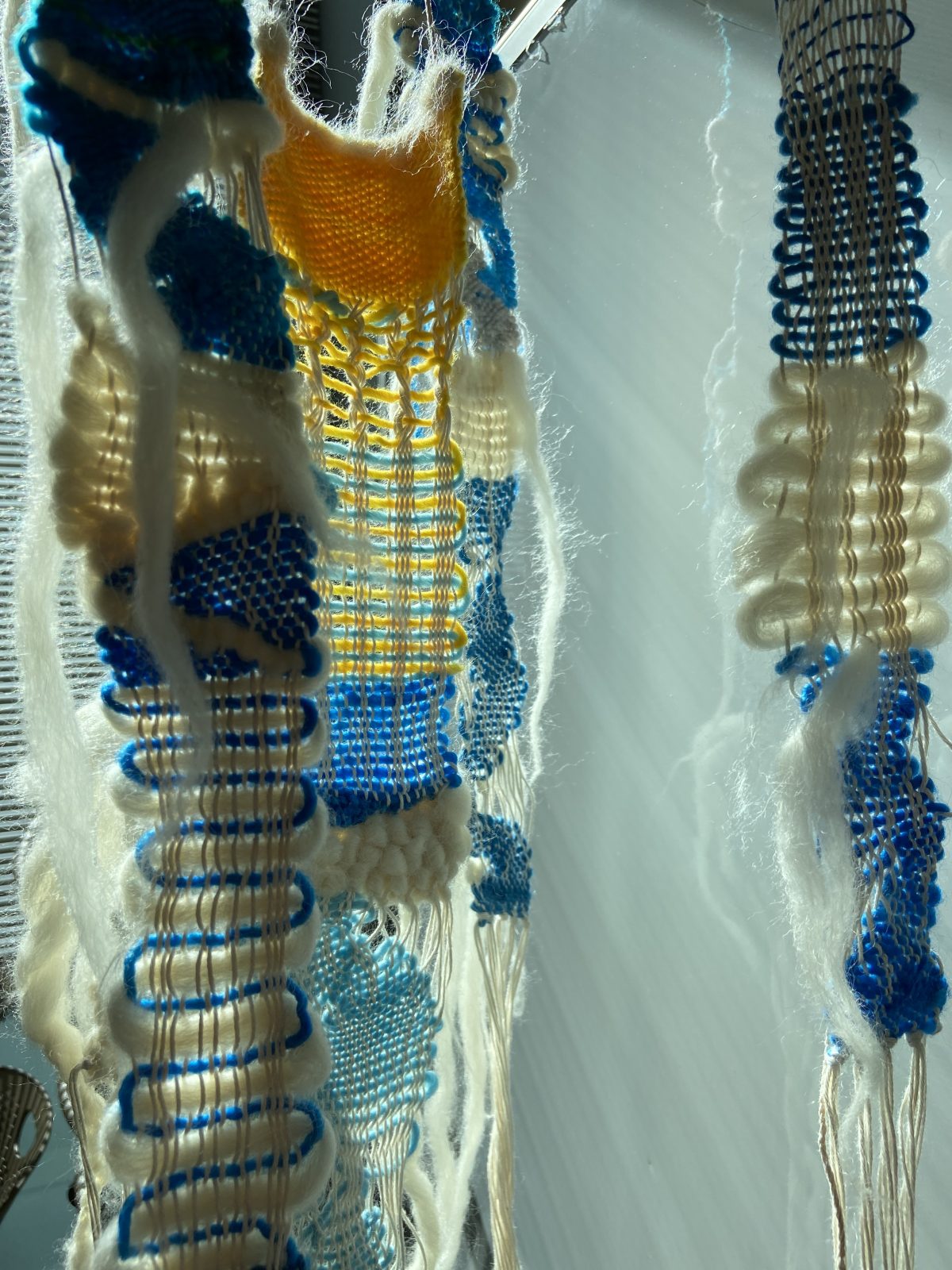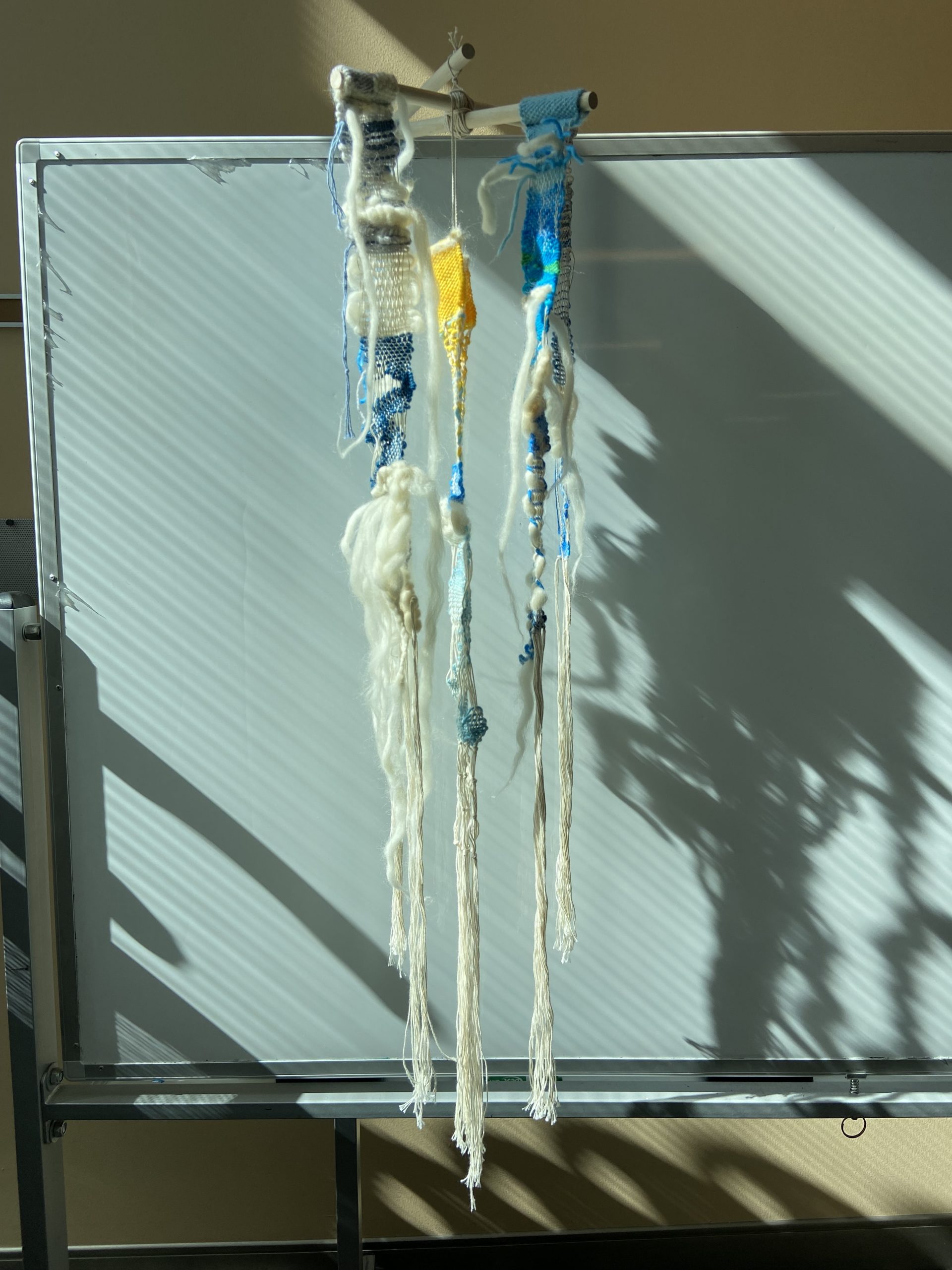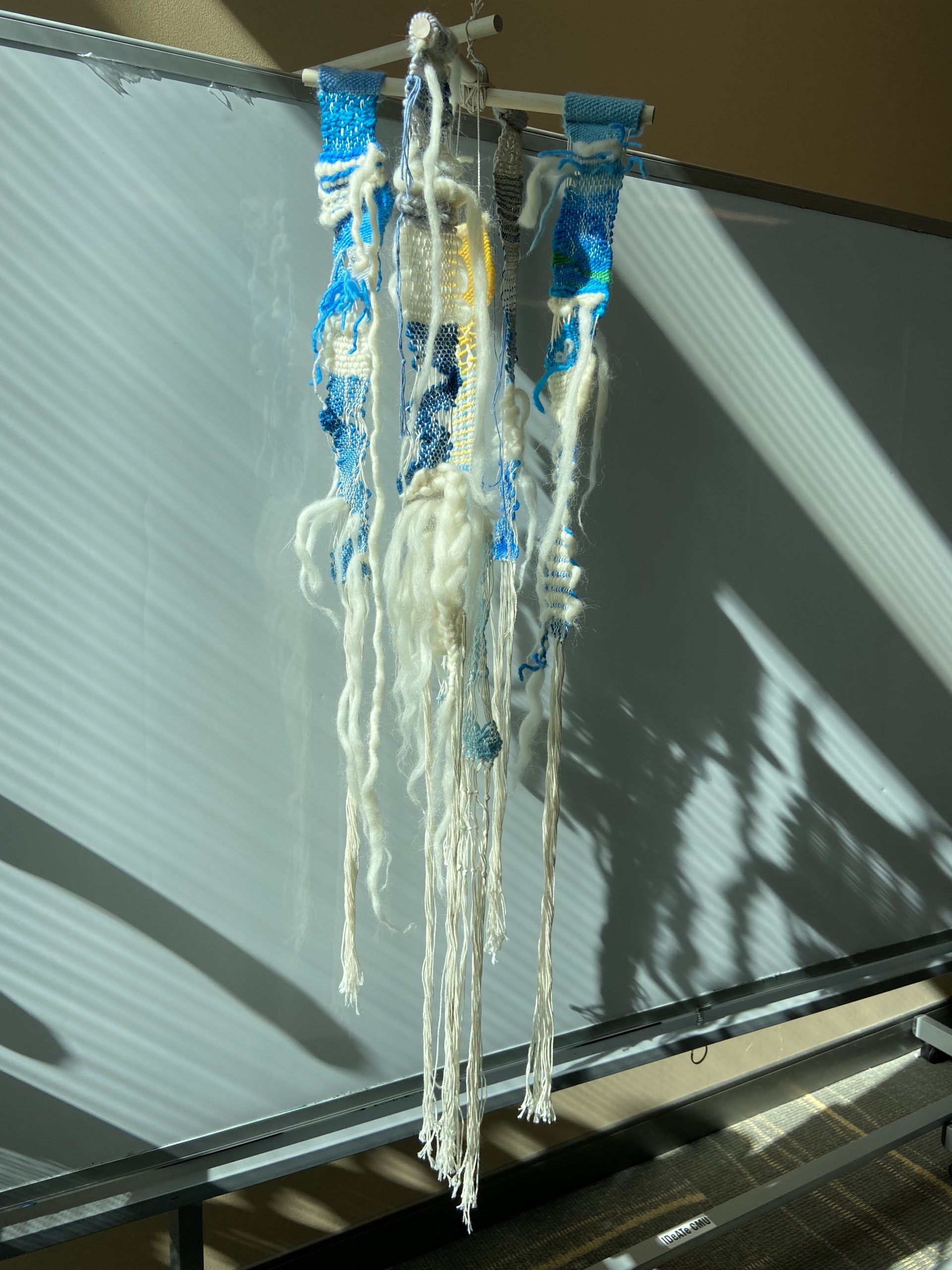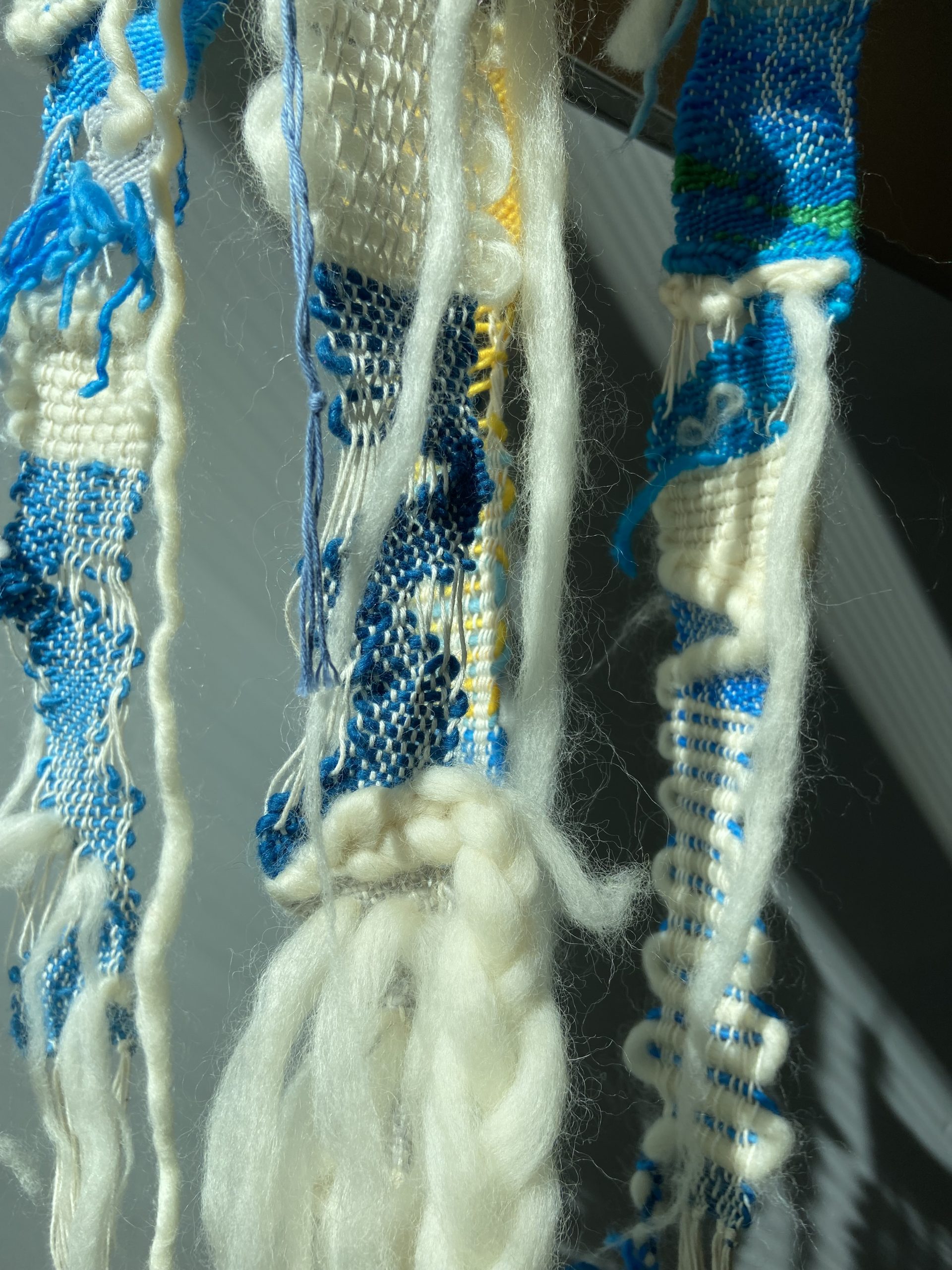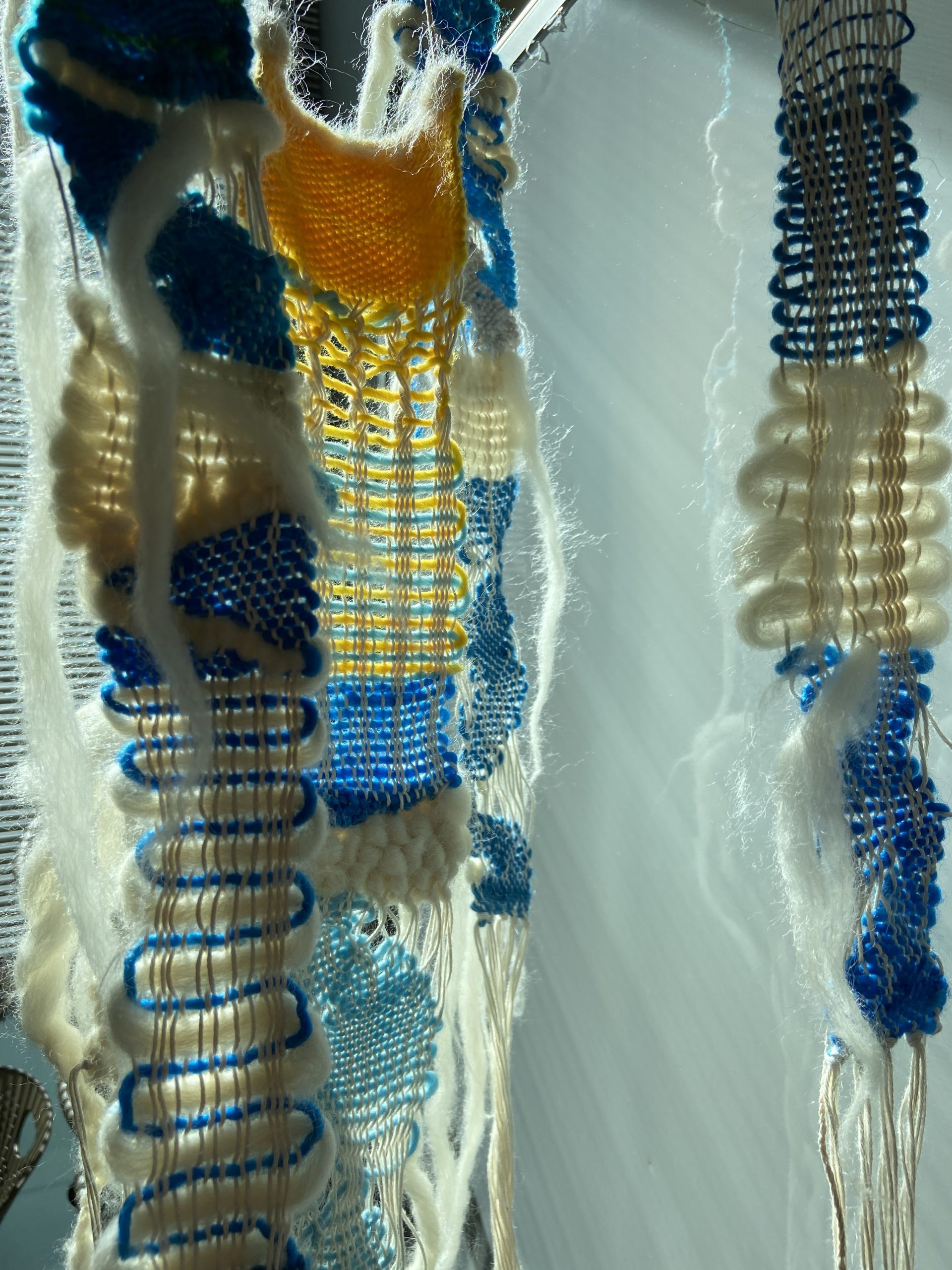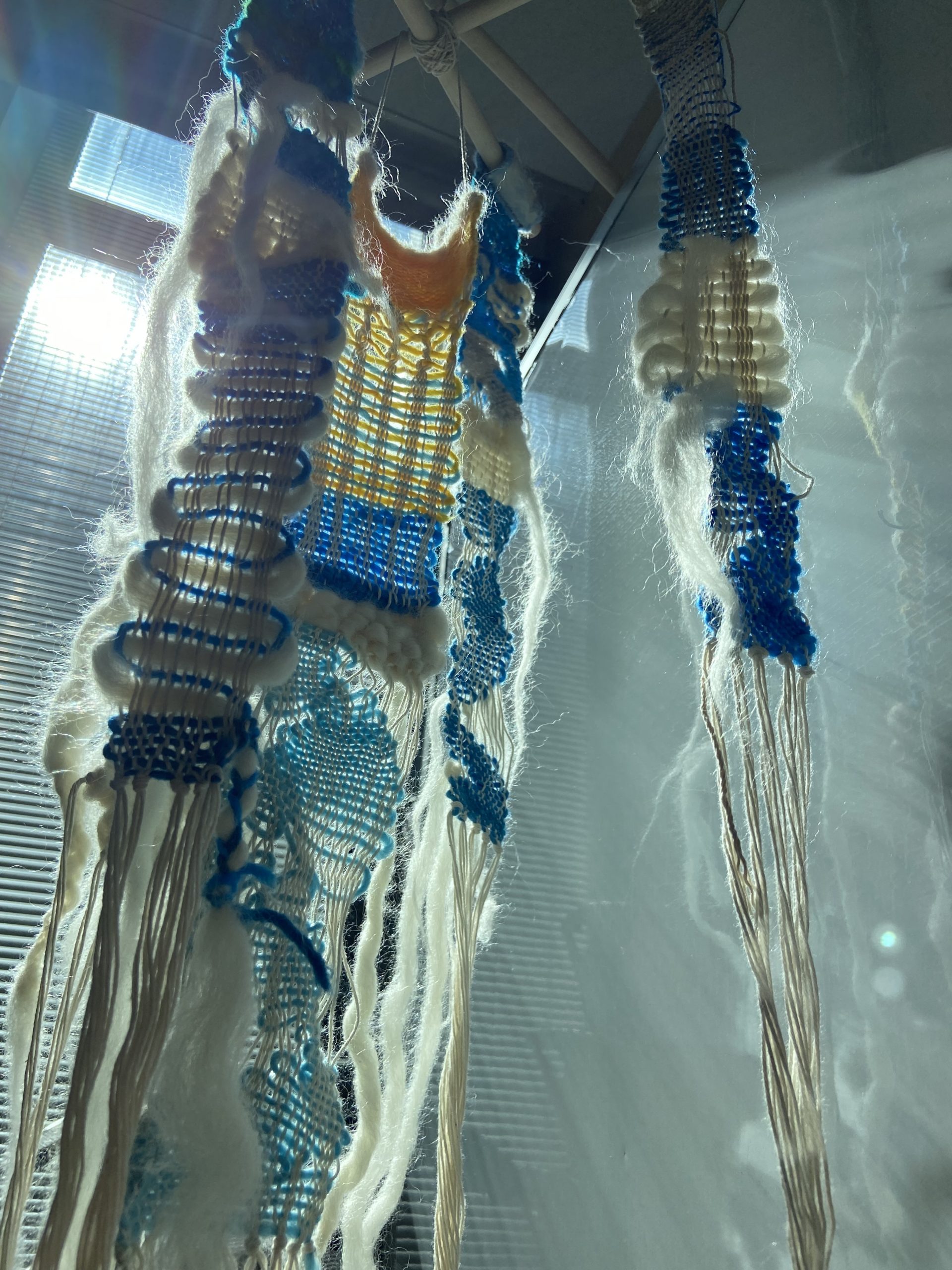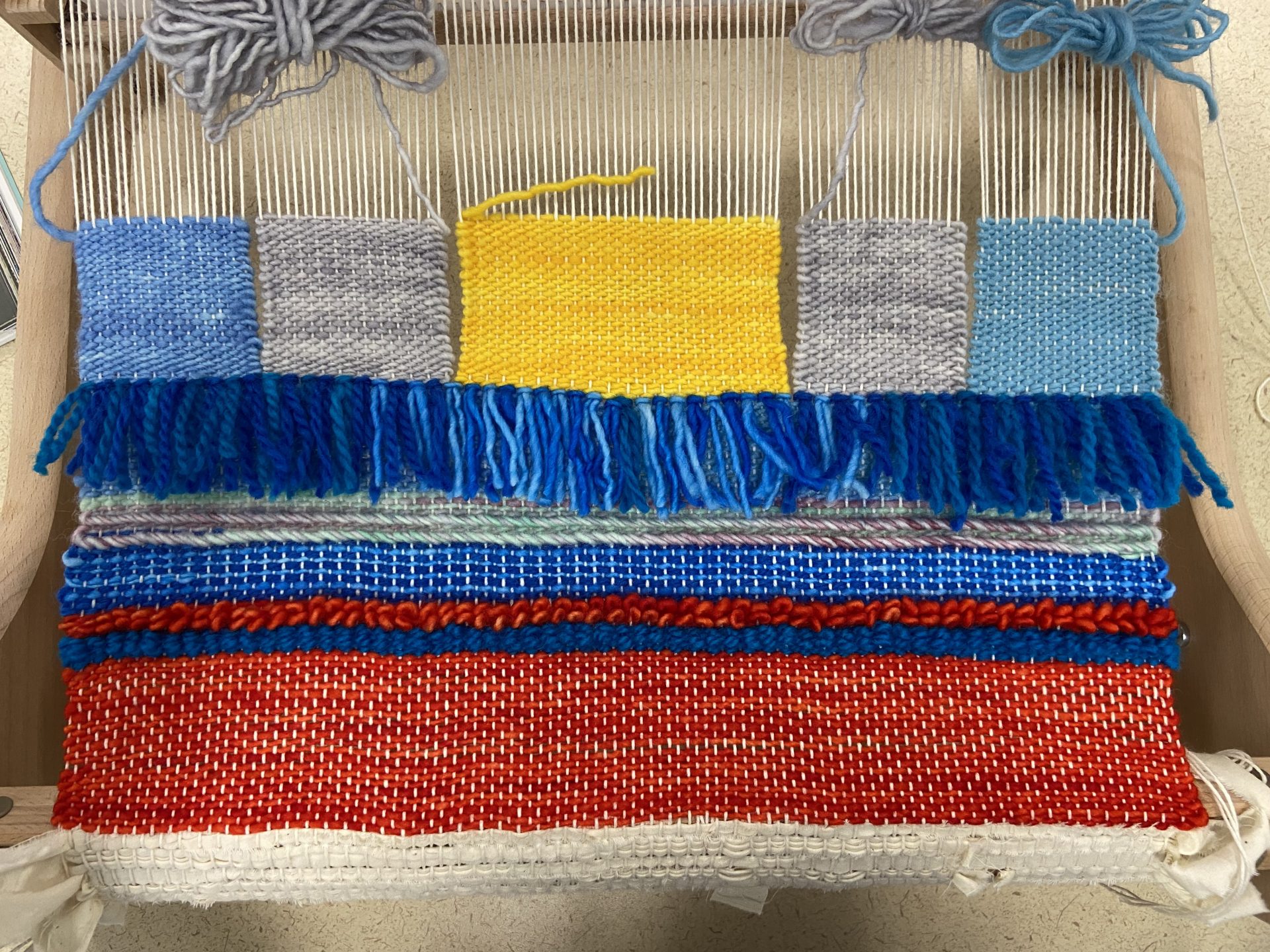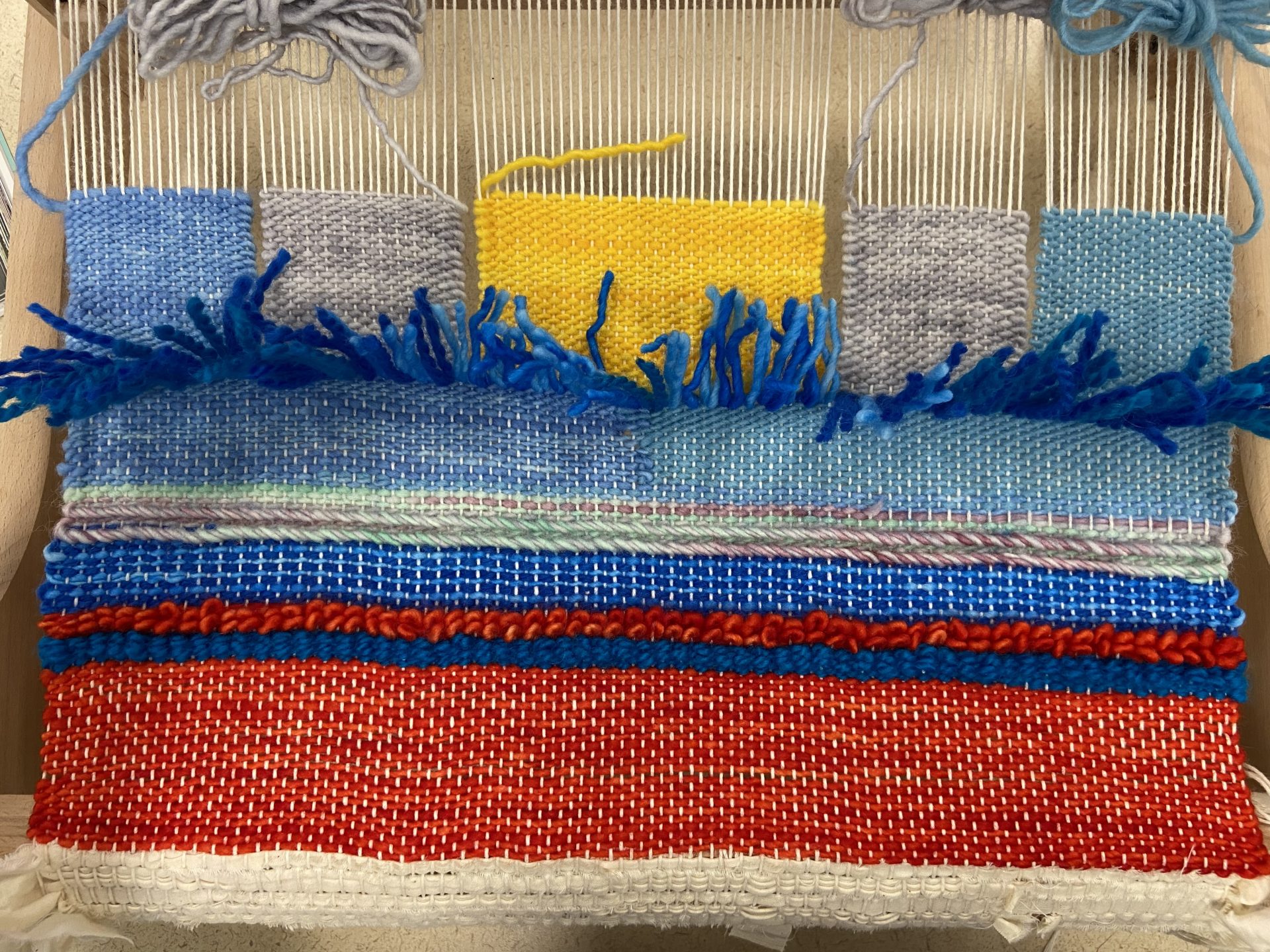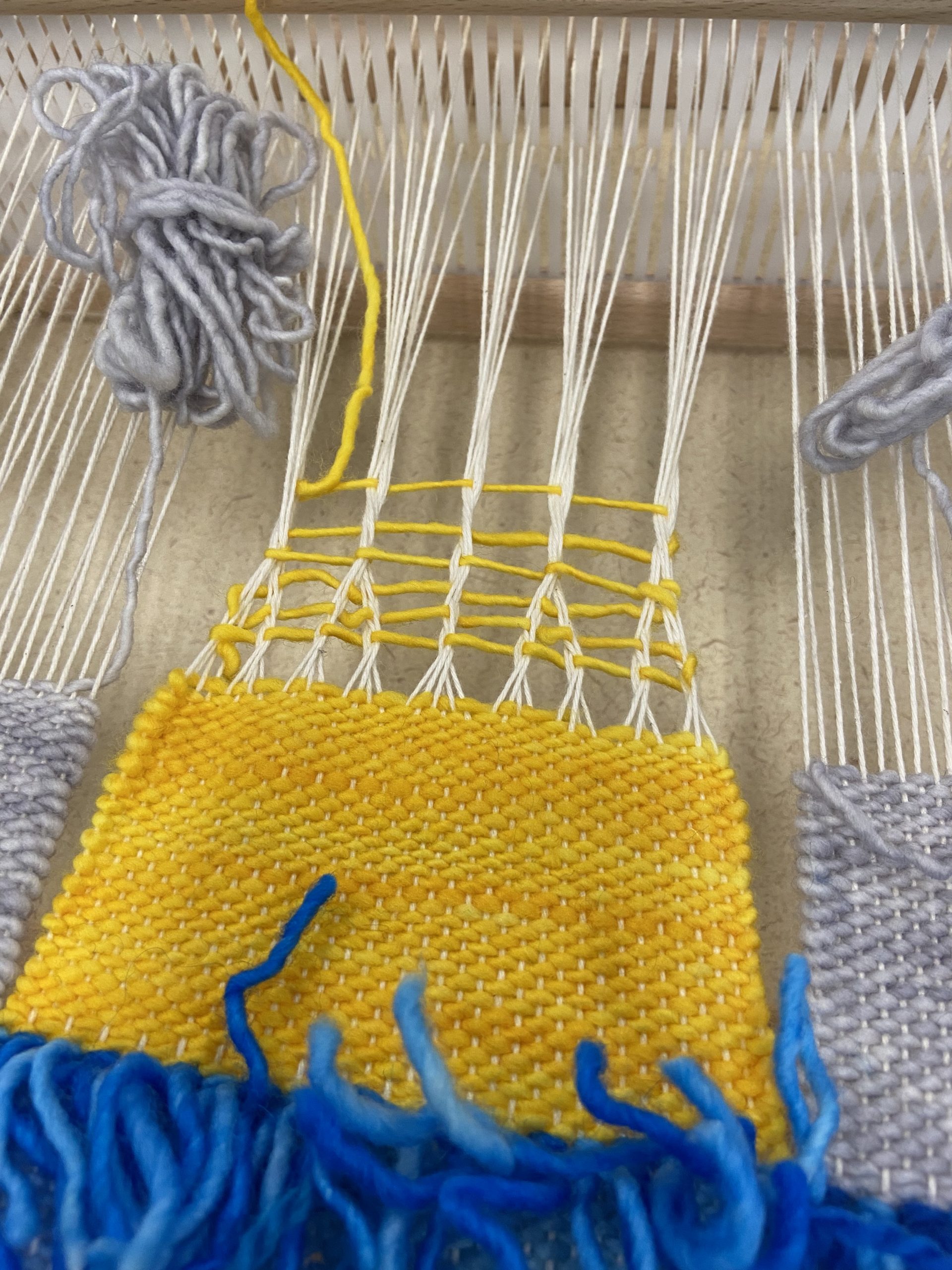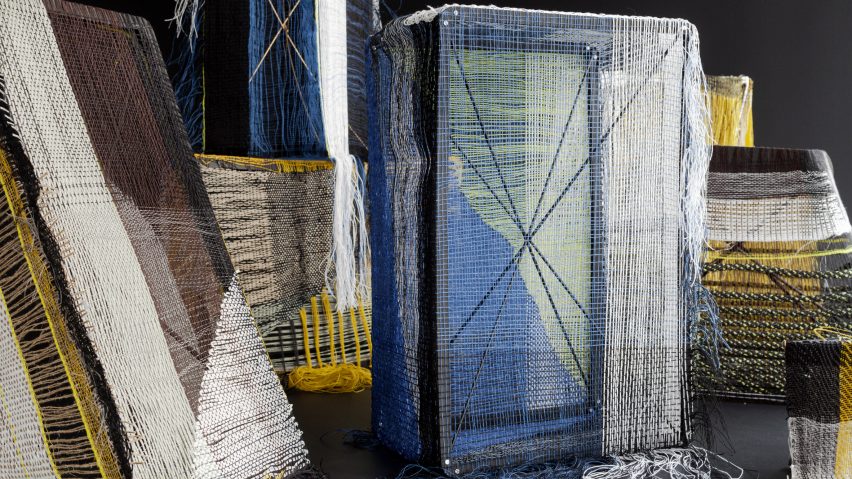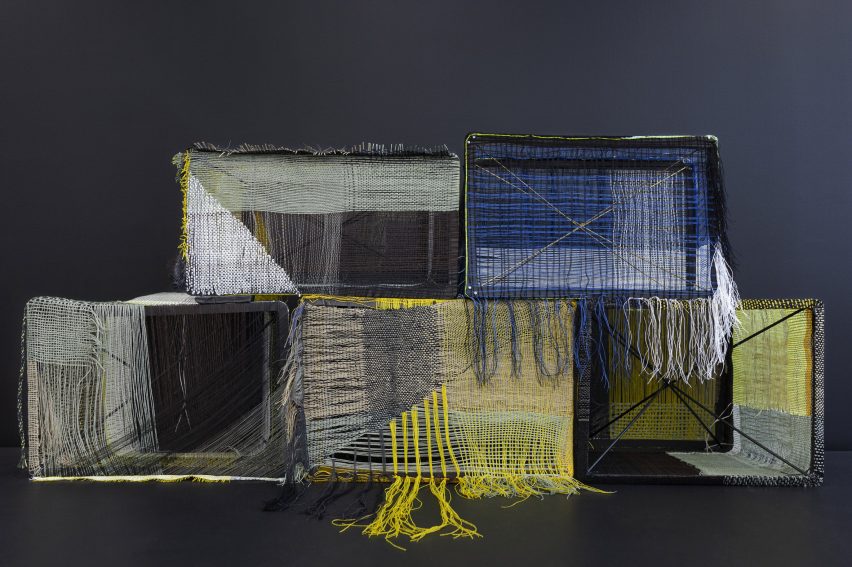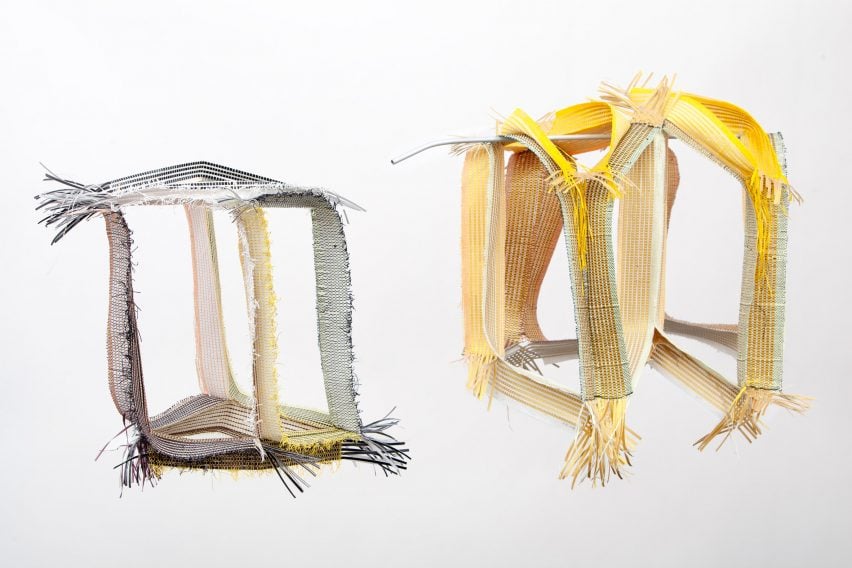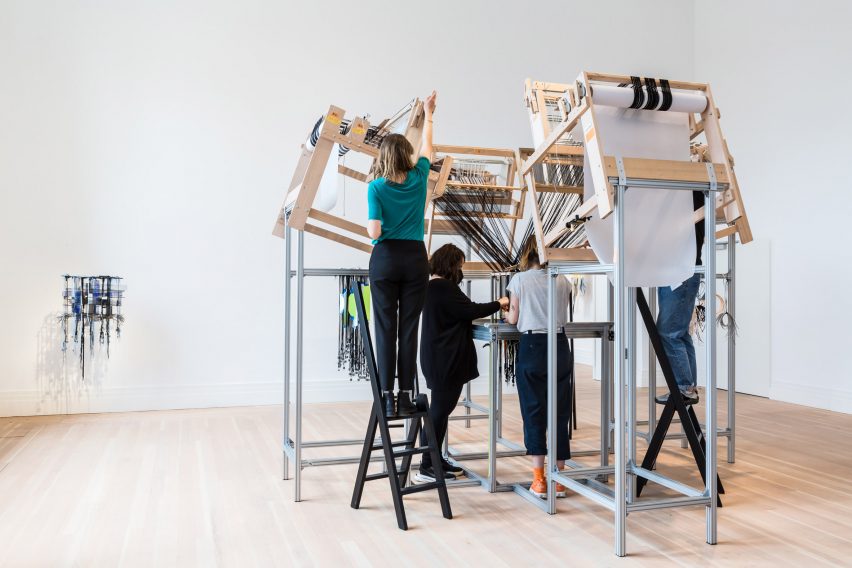For my project, I wanted to make a bojagi tapestry as a way of reconnecting with my Korean heritage. Having lived in Chile ever since I was born, I didn’t have much exposure to Korean culture, traditions, and history, but through this course I was able to learn about bojagi. The geometric shapes and airy translucency of the fabrics used in many traditional bojagi caught my eye. The way the light shines through the cloth also reminded me of stained glass and how it historically was used as a decorative means of storytelling through intricate designs and various colors. I wanted to take that concept and apply it in the form of bojagi, as well as embrace the collage/scrapbook-like quality of the patchworking nature of this artform.
I wanted the overall tapestry to look like separate but connected fragments of my memories of family and home, which I attempted to portray through faded old photos printed onto white fabric. The other pieces of fabric were similarly translucent and of varying “shades” of white or near-white colors. I had also saved a sheet of paper-like fabric with a traditional Korean print on it that, if I recall correctly, came from some sort of packaging for fruit. By including this paper fabric, it really felt as though I was creating a sort of scrapbook, where I decoratively put small artifacts or mementos as part of a whole collection of other memories.
The embroidered portions were meant to be more like symbols as well as decorative. During my gap year in Korea this past year, I learned that Koreans have so many different ways of eating and preparing persimmons, and so there are multiple ways of calling the fruit. Persimmons are also one of the fruits that I associate with a lot of memories of my family, so I wanted to incorporate it onto the bojagi. The lotus roots also hold a lot of significance to me, specifically in the bond I have with my dad, whom I had had some trouble understanding and bonding with prior to my gap year in Korea.
I wanted my tapestry to be larger, both in width and length, but due to time constraints I was unable to reach that size. I underestimated the time it took to assemble the entire bojagi, especially because I did not have a set plan or draft of how I wanted the overall layout to look like. I decided that I liked the more “do as you go” sort of methodology that is often done in scrapbooking. There was still a bit of planning because I had to make sure I spaced out the different fabrics well enough and because I had to make sure the rectangles of fabric would fit together nicely like puzzle pieces. Yet, I did not restrict myself by establishing a defined, detailed course of action in order to hone into the free and calm manner that memories come as they do.
Using the embroidery machine for the first time was challenging, as it took me some time to learn about how and why certain problems arose, like the size of the pattern being embroidered would often cause the thread to break. I also faced a few issues when sewing the bojagi pieces together on the sewing machine. I had to sew very close to the edges, so sometimes I’d stray too far into the fabric or too far out and sew the air instead. Some seams also got too thick for the sewing machine to go through it or the folds of the fabric were not staying in place the way I wanted them to, so I had to hand-sew them. I liked this problem I faced, though, because it made me try out stitching it in the traditional way that bojagi is hand-sewn and also gives it a slightly different look, as part of the stitching becomes visible.
Overall, I am very pleased with how my tapestry turned out. I was afraid I was not going to be able to achieve the airy and clean look that I associate bojagi with, but I was able to sew and piece the fabrics together. There were some wrinkles here and there that arose due to the way I sewed them on the machine, so I think that if I were to do it all by hand, I might not encounter the same issue as much. Or if I more meticulously planned and measured my pieces of fabric, I may have encountered fewer rough seams.




